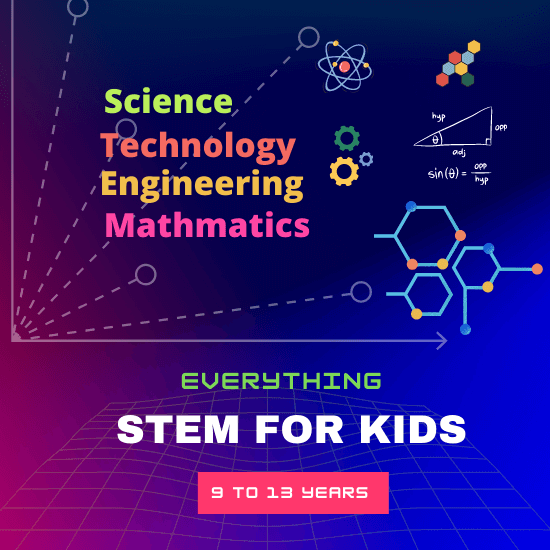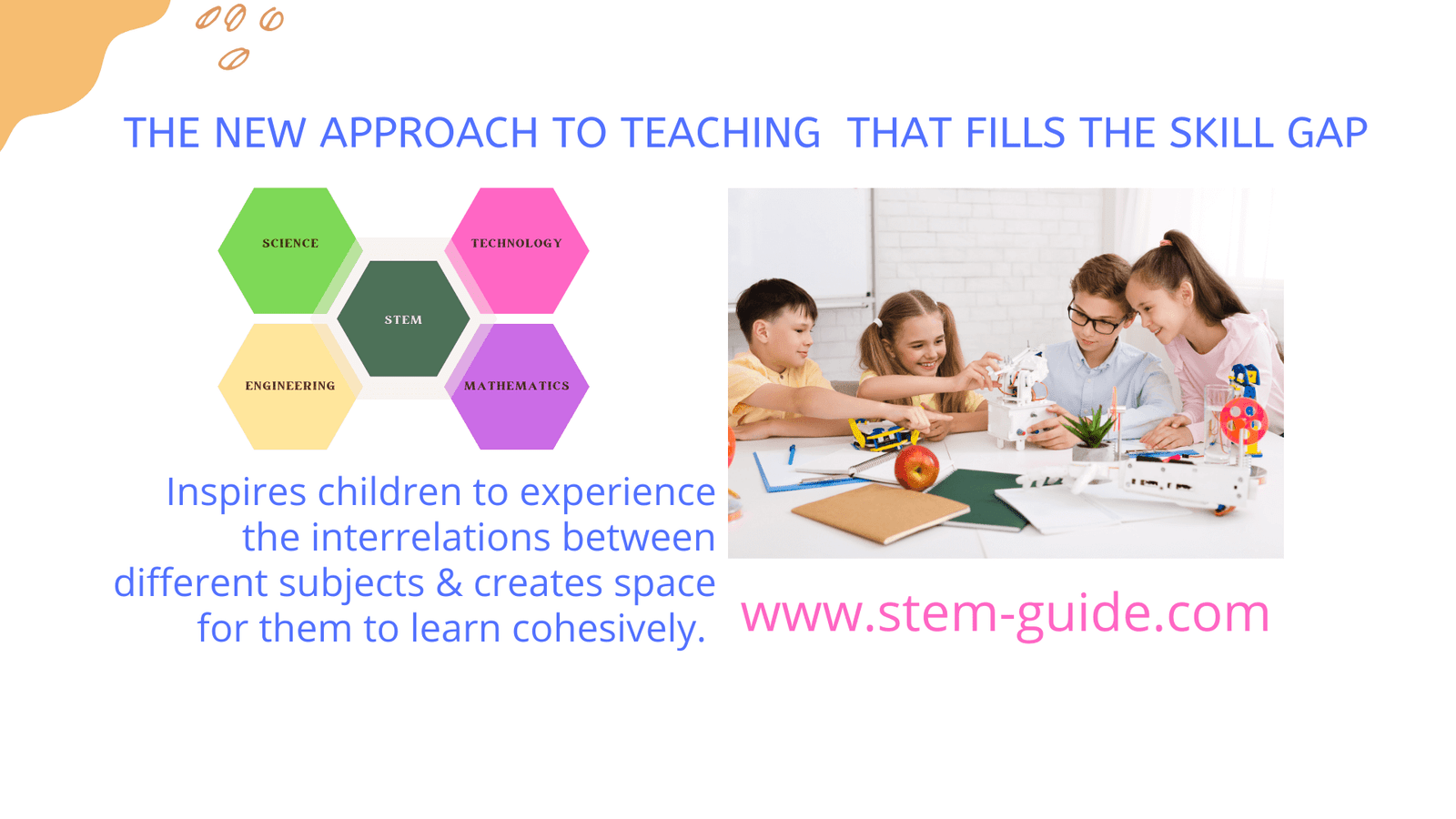STEM for Kids: Professional Skills!

STEM Education: Develops Skills for Children!
STEM education is an innovative approach to the teaching-learning method. This concept is initiated by the industry leaders in the 21st century for a great reason. There is a huge gap between the knowledge students achieve from the degree they earn and the skills the industry needs.
You may doubt what I am saying, but to make you understand this you need to follow me. The education system and the curriculum that we have is not proportionate to the demands of today’s life. We need a 5G network today but the curriculum we follow was designed when there was no idea of such a network.
By the way, if a graduate is not prepared with the skills to solve a problem then who will offer jobs. If we are teaching the history of old kings in the syllabus then who will solve the scarcity of fuel. If high school students are not inspired for innovation, not prepared to accept failures and rejections which is not fair enough.
We need graduates who can think and find the solution for a broken economy and increase stability, uplifting the growth mindset. Our country needs more scientists, engineers, and doctors to thrive in the growth of the economy. We need more teachers who can prepare more scholars and nation builders who can solve the current problems of the country.
Because, when people apply for a job in the top-ranking industries they need certain skills to drive and lead the organization. But it’s hard to find those skills with the educated youth of the country. They need to be trained again on the skills they are going to work on.
Do you agree?
Hence, we need education systems that can train the children in all the professional skills in the school. They can learn to fail and accept rejection when they are using pencils to write their examinations. They can experiment and prove the facts learned from the textbooks, and erase and re-write the correct versions by themselves. They also need to practice innovation engineering and problem-solving in the age when their mistakes are considered learning.
The country needs more expert bankers for a better economy who can solve anything during the banking hours. We need more experts in our banks who can repair network connections instantly without making customers stand on the Q. we want more bank professionals who can serve customers instead of making an excuse of silly words like ‘server error’, ‘network errors.
And of course, all of those are possible if we train our children with a curriculum integrated with STEM ( Science, Technology, Engineering, and Math together).
U.S. Department of Education explains the importance and demand for a skilled workforce in the constantly changing complex world. The nation’s youth need to be prepared to solve problems and be capable to distinguish how to collect and evaluate evidence to make decisions.
What is STEM Education? and why it is important?
STEM education is the method of teaching that make student connect the knowledge (concept, information, and data) they have learned. And apply them to solve a real-world problem. You may not be solving a problem all the time. But you can cross-check the concept you found in the science book that is true and also verify your learning with evidence.
So, the term STEM education refers to the process of enabling students with a positive and child-centric learning environment. During STEM activities that encourage students to fail and try again. It should develop an atmosphere for students to make them understand the importance of failure as a learning exercise. And also encourage them to tolerate the errors as part of the learning process.
Wait, I am going to make you clear about how these four subjects can be integrated to justify your learning with evidence. One of my STEM Lesson plan for class IV students was to teach photosynthesis, the process by which plants transforms light energy into chemical energy.
My students already know about photosynthesis but they have a question If photosynthesis happens only in the presence of sunlight then;
How snake plant converts CO2 (carbon dioxide) to O2 (Oxygen) at night?
To justify their question, I prepared a lesson plan using a CO2 Sensor with real-time data logging software. And they have explored the evidence-based hands-on learning activity and recorded sensor data to conclude.
Now, they have conducted experiments and learned about Crassulacean Acid Metabolism (CAM). A special type of photosynthesis that can convert CO2 carbon dioxide to O2 oxygen at the night.
How did STEM Education become populated?
The most remarkable campaign “Educate to Innovate” of the Obama administration in 2009 highlighted the concept of STEM education in the United States. They have also encouraged private-public partnership, and allocation of grants to accelerate the gesture of STEM learning. This campaign has inspired students to pursue higher education and excel in STEM subjects. And it has also addressed the issue of an inadequate number of skilled teachers to educate children in the STEM fields.
Gradually, people around the world started talking about STEM. They start asking questions, how STEM is going to help accelerate the innovation among the students?
A lot of educational intuition and universities conducted seminars, and workshops to design ideas and guidelines on STEM. They initiated programs to experiment with the outcomes of STEM activities. They have introduced activities integrating science and math topics with hands-on applications in the classroom. The students were interested and engaged themselves in hands-on activities as they find connections between science and math topics with real-life activities.
Those activities reflected the engagement of students and the kind of attention they pay during the activities. It also leads them to analyze and study situations, collecting facts and evidence to make informed decisions.
Slowly, STEM became a trend in education, and many start-up companies formed to manufacture Teaching Learning Materials. They help to implement theoretical subjects into practical approaches. Some of the organizations had worked hard in research and put continuous effort to develop hardware and software. They also crafted integrated lesson plans and tutorials for both the students and teachers.
Importance of STEM education!
It has been observed that only STEM education can help us fulfill the need of the changing world economy. According to an article in HR magazine, millions of STEM jobs remain unfilled in the U.STherefore, it is required to pay attention and put effort to fill up the skill gap among the youth.
- There is a projected growth of STEM-related occupations of 10.5% between 2020 to 2030 as compared to 7.5% in non-STEM-related occupations. Source: U.S Bureau of Labour Statistics.
- Employment in computer occupations is projected to increase by 12.5 % between2014 between and 2024.

How STEM education is different from traditional education?
In traditional science and math education:
- The main objective is to learn the concept only and score good marks in the examination.
- There is no scope of interrelation between any subjects and there is no co-related topic to apply in real life.
But, in STEM education:
- You need to focus on the application of science and math topics in real-life problem-solving.
- And retention of knowledge you learn.
STEAM education can create space for every student depending on the individual’s interests and can be utilized based on the performance. If you create a proper STEM learning environment for your students and prepare a child-centric lesson plan with performance appraisal. Then you will be able to measure the learning outcomes achieved by individual students which may not be possible to imagine in the traditional way of teaching.
Why STEM is getting so much attention?
STEAM education drives the teaching and learning process beyond the traditional test-based performance to an activity-based learning process. It focuses on developing thinking skills by connecting classroom learning to real-world problem-solving and innovation practice. It also encourages students to research, communication, collaboration, critical thinking, and creativity.
The skills that students need to become successful in the 21st century regardless of specific interests or career goals. It helps young minds to realize that the future will be built on the capacity to innovate, invent and creatively solve problems. Those who can prepare them for the required skills will get success in their life.
To understand the definition of STEM people normally use the acronym STEM which stands for Science, Technology, Engineering, and Mathematics, and consider that the definition is clear. But do you understand something special from the word STEM? I guess you say that these are simply the names of the four subjects of study.
If you are taking a biology class in college does it mean that you are taking a STEM class?
In this case, I can tell you that technically you are taking a class that comes under the part of STEM. But honestly speaking that STEM is not just limited to biology. It is much more than just considering the four subjects in the catchy acronym. It is the way of teaching that integrates all four subjects (science, technology, engineering, and math) combining them into a single core teaching philosophy.
Conclusion! STEM is a new way of learning!
The STEAM is expected to design a learning program that integrates science, technology, engineering, and math in a way that can empower students to use inter-disciplinary knowledge to solve problems. It means that as a student you will not be given the explicit solution to a problem, but you will often be required to use the existing knowledge to figure out the right answers for yourself.
That means you will not get a readymade answer or explicit solution to a given problem. Instead, you may require using the existing knowledge to figure out the right answer to a given problem. And you need to have a significant amount of creativity and flexible thinking, as well as mastery of each discipline with sufficient technical knowledge.
As a teacher, you can see some of your students are extremely analytical about a particular topic but on the other hand they appear slightly less creative as compared to their peers. If you implement the STEM education properly then it can help your extremely analytical students to become enough creative and keep a balance between being analytic and creative.
A successful STEM student can quickly learn how to think for himself without expecting to be told what to think and this is one of the possible expectations of the industry.
Table of Contents
- STEM Education: Develops skills for children
- How did STEM Education become populated?
- Importance of STEM education!
- How STEM education is different from traditional education?
- Why STEM is getting so much attention?
- Conclusion! STEM is a new way of learning!